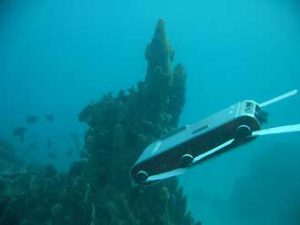
By Neale McDevitt
Question: Aside from onscreen emotional range, what does Arnold Schwarzenegger have in common with your brand new dishwasher? Answer: Schwarzenegger played an intelligent machine in the Terminator movie franchise and, chances are your new dishwasher is an intelligent machine as well.
While the phrase “intelligent machine” sparks images of Blade Runner’s doomed replicants and Space Odyssey’s velvet-voiced Hal, the fact is many of us share our daily lives with machines that by definition are considered intelligent.
“An intelligent system is able to perceive its environment, react to this perception and condition its response accordingly,” said Frank Ferrie, a professor in the Department of Electrical and Computer Engineering and the former Director of McGill’s Centre for Intelligent Machines (CIM). “The modern dishwasher is a perfect example of such a system. It has sensors that will vary the running time depending on how cloudy the water is. It adapts to a particular condition to, hopefully, do a better job.”
Having opened its doors 25 years ago this fall, CIM remains at the forefront of intelligent systems research, development and education that goes a little beyond building a better household appliance.
The work being done at CIM is based upon four themes designed to reflect the rapid evolution of the sector of intelligent systems: artificial perception, robotics, systems and control, and human-machine interface. Work being done here will have lasting impact on everything from healthcare to architecture to industry. And while much of CIM’s work is very hands-on, there are researchers working strictly on theoretical advances. CIMites dream it, design it and build it.
Perhaps CIM’s most famous progeny is the AQUA project in which researchers, led by Gregory Dudek, Director of the School of Computer Science, are designing a fully-autonomous amphibious robot which can explore underwater environments and gather data with minimum disturbance of the indigenous marine life.
Over the past quarter century, CIM has been feeding industry and academia a steady diet of highly qualified, highly motivated intelligent systems investigators.
“Our 400-plus alumni form a good part of the core of intelligent systems research workers in Canada,” said Benoit Boulet, the Centre’s Director. “Just at the Canadian Space Agency, we have some 10 alumni in the robotics group.” Included among CIM’s distinguished alumni is astronaut Julie Payette, a veteran of two Space Shuttle missions.
The Centre has also spawned the creation of some 25 companies, spun off by students, to rapidly exploit the technologies associated with their research. About 15 such companies have been formed in the past 10 years alone.
CIM’s success is due, in large part, to the collaborative mindset of its 20 members and 130 graduate students, post-docs, associates and visitors. While most come from the Depts.of Mechanical, Electrical and Computer Engineering or the School of Computer Science, others come via medicine, psychology and biomedical engineering.
“Each of us understands partial bits and pieces of the same problem,” said Ferrie, “but if you get us all around a table talking about things from different perspectives, you start to leverage that collective experience – and that’s when breakthroughs happen.”
For his part, Boulet is more than happy to celebrate CIM’s silver anniversary by taking a walk down memory lane – but not for too long; there is always the next 25 years to think about.
“More and more, the tendency in intelligent systems seems to be moving toward the field of medicine – robotic surgical tools that can repair heart valves and that sort of thing,” said Boulet. “What’s nice is that we seem to drift that way naturally because McGill is so strong in medicine and because of the work we do with the Montreal Neurological Institute. I think we will see a lot of exciting possibilities in the years to come.”
And speaking of exciting possibilities in the future, just how close are we to a Blade Runner scenario?
“Fifty to 100 years,” said Boulet, citing a critical mass of research going on in intelligent systems research that promises to grow the field exponentially in the coming decades.
Boulet’s colleague is less confident. “More and more, you hear some wonk saying ‘our computers have now reached the complexity of the human brain.’ That’s basically saying we can build a machine with enough switching devices comparable to the number of neurons in the brain,” said Ferrie. “Big deal. We still barely understand the deep structure of the brain. We don’t understand computationally what the brain is doing. We’ve made a hell of a lot of progress since Hubel and Wiesel [Nobel laureates who worked on sensory processing] back in the late ’50s. But to go from the point where we can sort of understand the processing of information in the early visual system to actually figuring out ‘Hey, that’s my mom’ – it’s such a huge leap.
“There are a lot of really clever parlor tricks, but in terms of real fundamental breakthroughs and innovation – those tend to be far fewer and farther between.”
As part of the CIM 25th anniversary celebrations, Roger Brockett of Harvard University will deliver a Beatty Talk, What is an Intelligent Machine?. The lecture will take place on Oct. 29, at 6 p.m. in room 0100 of the Lorne M. Trottier Building.
